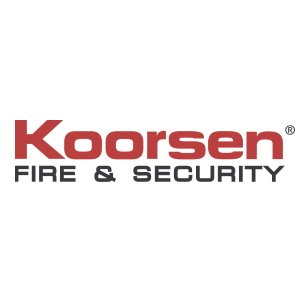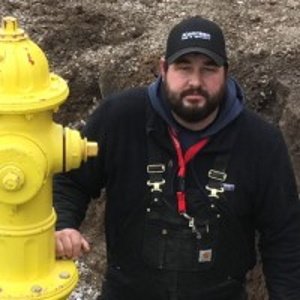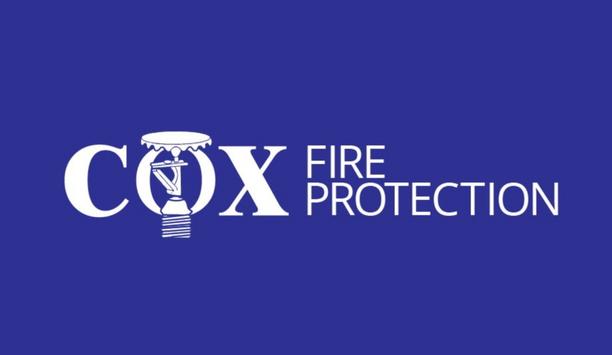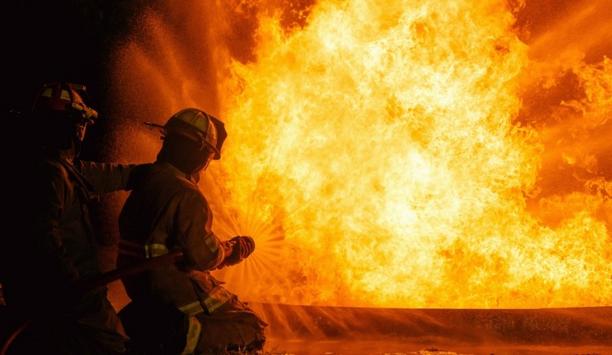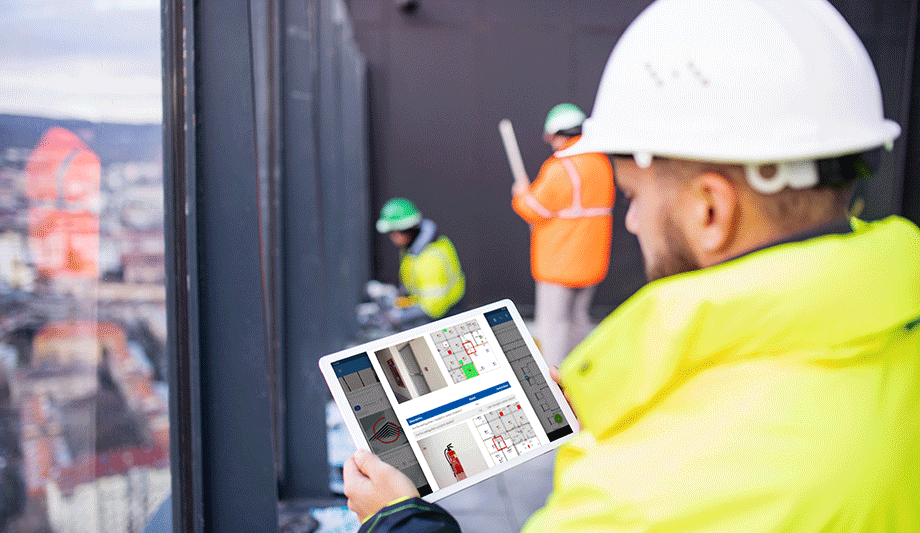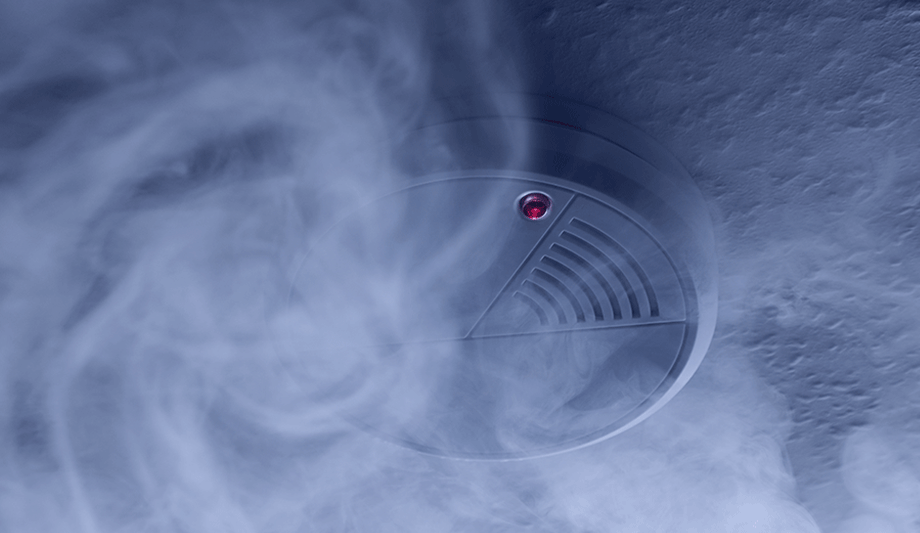Koorsen Fire & Security - Experts & Thought Leaders
Latest Koorsen Fire & Security news & announcements
Cox Fire is proud to welcome Devin Smith to the Tampa Sales Team! Devin is a seasoned fire sprinkler man, getting his start in the business in Indianapolis with Koorsen Fire & Security. Devin has experience in the field, in alarm and sprinkler inspections, and in sprinkler and alarm service. Protecting customers’ properties His diverse background and desire to learn all aspects of fire protection opened doors for him to move into a sales position, and he brings years of experience to the Inspection Sales Department at Cox Fire. When Devin is not at work he can likely be found with family and friend at Lightning games, on the golf course, or at the beach, always accompanied by his 3-month-old puppy Indy! Devin is passionate about fire protection in knowing that not only is he providing protection for his customers’ properties, but also their businesses and employees. Welcome to Cox Fire, Devin!
Setting up fire and/or security monitoring services for one’s business provides great peace of mind. But the process can be confusing, especially when multiple parties are involved in providing the services. Koorsen Fire & Security wishes to provide quality monitoring services to our customers, which is why the company works with CMS, who provides excellent service and a valuable end-user experience with their free online portal. To better understand how one’s Koorsen monitoring services work, and to help one take full advantage of all that is available to one, read on to learn about CMS and their free online portal that allows one interactive access to one’s monitored alarm accounts. Criticom Monitoring Services Criticom Monitoring Services (CMS) is a monitoring agency that has been in business for over 40 years. They operate as a wholesale alarm monitoring company in the country and provide monitoring in partnership with over 3,500 alarm and security companies, such as Koorsen Fire & Security. With three separate, yet redundant, 24/7 monitoring stations across the country providing monitoring services for responses to fire, security, two-way voice pendant monitoring, and more, they are ready to serve their customers whenever they need it wherever they are in the nation. CMS and MyAlarms.com Online Portal Working Security alarm customers typically request that the operator attempt to reach them first CMS’s stations are staffed with highly trained operators who respond immediately, according to their customers' specifications, when an alarm signal is received. Security alarm customers typically request that the operator attempt to reach them first before sending emergency responders to help reduce false alarms. But, in the event the customer cannot be reached, emergency dispatch will be sent to the site. Customer response If the operator does reach the customer, the customer can respond in one of three ways: Inform the operator that it is a false alarm. The customer will provide a verbal false-alarm passcode, which is a secret word chosen by the customer, to let the operator know they are who they say they are and that all is well. Inform the operator that it is a real alarm and that emergency dispatch is needed. If held in a hostage situation, the customer can give the operator the verbal duress code – another secret word– that lets the operator know the customer is in danger and needs immediate help. The operator will hang up and immediately send the authorities. Any wrong passcode given will be treated as a duress code resulting in the dispatch of authorities. While, to a degree, the above operations are standard for many alarm monitoring services, what is not standard is CMS’s MyAlarms.com Online Portal. Online Portal When one is a Koorsen monitoring customer, one gets FREE access to MyAlarms.com Online Portal The beauty of CMS’s MyAlarms.com Online Portal is that it allows one to do in seconds, with the click or tap of a button, what most monitoring customers have to type an email or make a lengthy phone call to do. When one is a Koorsen monitoring customer, one gets FREE access to MyAlarms.com Online Portal, giving one more access and more control over one’s monitored systems. Benefits of Using the MyAlarms.com Online Portal The benefits of being able to manage one’s monitored security and fire systems without having to make a single phone call include the ability to: Add and remove contacts at one’s convenience as quickly as one need to. When an employee leaves, one can immediately remove them from the contact list. Likewise, when a new employee is hired, one can add them on without having to make a phone call. Add and update verbal passcodes to be given to the monitoring center by one’s contacts in the event of an alarm. For security, it is recommended to change these passcodes regularly, especially any time an employee leaves or is let go. Put one’s system into test mode to avoid false alarms and related fines. One will want to do this whenever one’s are testing or performing maintenance on the system, or when doing renovations or construction projects that could accidentally trigger an alarm. Test mode, event history and reports One puts either one’s whole system or specific zones into test mode for up to 4 hours, during which the monitoring center will know not to respond to any alarm activity at that site. Review, in real-time, all event activity and history on all of one’s monitored accounts from one’s phone or tablet. One will be able to see the details of how many and which alarms were triggered and what, if any, agency dispatches occurred as far back as 18 months. Download event history reports for use as evidence or analysis to improve security and safety strategies. Check one’s system and zones status. Access online Access MyAlarms.com Online Portal from a smartphone, laptop, or desktop 24/7. The MyAlarms.com Online Portal makes managing one’s accounts extremely convenient and is a significant time-saver. One will have 24/7 access to all of one’s information, along with the ability to update it without having to wait for office hours to make a phone call and without having to wait on hold to make a simple change. The portal also puts one in control, allowing one to make updates and changes when one needs them and giving one’s knowledge of all one’s monitored accounts’ activities.
If you are like most homeowners, you want to do everything you can to protect your home and those you love who live there. Installing smoke alarms is one significant way you can do that. However, while many homeowners have smoke alarms, they often neither understand the most effective locations and placement for their alarms, nor the proper testing and maintenance their alarms need to keep their home safe. So, if one is planning to purchase and install smoke alarms in one's home, or if the home already has them, but one isn't sure they’re correctly installed or maintained, read on to learn all one needs to know. How Many Smoke Alarms Should You Install? A home needs sufficient smoke alarm coverage to protect it and those inside from a fire. Unfortunately, many of the modern furnishings and styles are more susceptible to catching and spreading fire quickly than in times past, when furnishings were fewer and made of natural products. This means fires can get going more easily and spread more quickly. Thus, smoke alarms need to be installed throughout the home. Having one or two will not be able to alert one in time to get out safely. That said, the specific number that one needs in one's home depends on the number of levels, bedrooms, and additional spaces that one has. Thus, answering the following question will help one better determine the number that one needs. In Which Rooms Should You Install Smoke Alarms? The NFPA calls for installing a smoke alarm: Inside each bedroom. Outside of each sleeping area. On every level of the home, including basements. In a main living area, such as a living room, den, or family room. At the base of the stairs leading to the upper level. For example, a single-story, 3-bedroom home with a split floor plan and no basement would likely need at least six smoke alarms (three for the bedrooms, two for outside the sleeping areas, and at least one more in the living space if the home is large enough to warrant it). For larger homes, more may be required to adequately protect the living and activity spaces outside of the bedrooms and sleeping areas. Properly Placing & Installing Smoke Alarms In addition to knowing where in the house, smoke alarms should be, it is also important to understand where specifically within the space to place and install them. Proper Location in a Room/Space: Mount alarms either high on the wall or directly on the ceiling itself, as smoke rises. If one chooses to mount it on the wall, the top of the alarm should be no more than 12 inches beneath the ceiling. Pitched Ceilings: If one has a room with a pitched ceiling that will need an alarm, the placement will be slightly different. Install the alarm within three feet of the peak, but not within the peak’s apex, which is approximately four inches down from the peak on either side. So, essentially, place it anywhere between 4 inches to 36 inches down from the peak’s apex. Where NOT To Place A Smoke Alarm Importantly, there are a few places you should NOT place a smoke alarm because it may cause false positives or prevent the alarm from sounding at all. Never place a smoke alarm near: Cooking appliances, furnaces, or fireplaces. Installing them too closely to these items will result in false positives. Alarms should be placed at least 10 ft. from them. Doors, windows, or ducts that would cause drafts, which may interfere with the alarm's ability to detect smoke and operate accurately. When installing smoke alarms in one's home, be sure to reference the above guidelines to help one determine the appropriate number and location of ones alarms. Testing & Caring For Your Smoke Alarms Having or installing smoke alarms won’t mean anything, however, if one does not regularly test and maintain them to ensure they are in working order. How often should smoke alarms be tested? Test one's alarms once a month to make sure they are working and do not need a new battery. How does one test smoke alarms? Simply press and hold the test button until the alarm sounds. It should be loud and strong. If the sound is weak or there is no sound, one needs to replace the batteries. Other maintenance and care: During the monthly testing, take a moment to also dust and clean out one's smoke alarm, like spider webs, debris, and dust can interfere with its ability to detect smoke effectively. Finally, change out the alarms’ batteries once a year, or if it has a non-accessible long-life battery, check the date to know when it’s time to replace the detector. Make Sure Your Home Is Protected By following the above suggestions, as well as the manufacturer’s recommendations, as one installs new, or check on one;s current smoke alarms, one should be able to ensure that one's home is protected by the correct number of properly placed and installed smoke alarms. And by carrying out monthly testing and quick cleaning, one will make sure those alarms are ready to work should a fire occur.
The New Future For Fire Agencies
DownloadThe Eight Key Trends in Fire Detection in 2023
DownloadA Digital Platform to Improve Fire Safety Compliance and Inspections
DownloadOvercoming the Challenges of Fire Safety in the Paper Industry
DownloadCarbon Monoxide: Creeping Killer Caught In The Act
Download